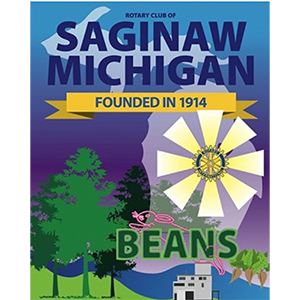January 25, 2020 | Jason Applegate
I must precede this review by confessing that The Great Gatsby by F. Scott Fitzgerald has always been one of my favorite novels. I love the poetic prose of the novel that encapsulates the Jazz era. I love the flawed characters who ironically believe the lie that their lives only have value if they are deemed successful by the very people who will do everything in their power to destroy any chance of their success.
The Great Gatsby, adapted for the stage by Simon Levy, directed at Pit & Balcony by Todd Thomas, captures the tragedy that befalls all of the characters who believe the delusion of the American dream and, consequently, are violently crushed for daring to climb out of the social class into which they were born.
Enlisting live jazz music to set the mood before the show and opening the curtain to a dance number, choreographed by Kaitlin Brunette, is the perfect way to thrust us back 100 years into the jazz age. Watching the joyful faces of the dance ensemble while they shimmy in the beautiful costumes (Robin Noah, designer) engages the audience from the start. All of the cast dances with wonderful energy, yet my eye is continually drawn to Isaiah Crawford because of his fervor and energetic execution. I wish that the jazz ensemble of Dave Miller (bass), Steve Nyquist (drums) and Jacob Wiesenbach (cornet) could be used more often throughout the play. They were wonderful.
The scenic design by Amy Spadafore contains multiple scene changes with a myriad of moving platforms, and it is an ambitious undertaking. I commend the deck chiefs and crew for their execution of these complex changes - only once did they fall victim to a tipsy ice bucket. While these scene changes create nice levels and a variety of looks to help the audience imagine the multiple settings, the noise of the moving platforms does distract from the action as the actors continue over it in dialogue. Still, I appreciate that director, Todd Thomas chose to continue the action while the sets shifted for the sake of pacing, and I admire Bailey Bank’s ability to light different parts of the stage to draw the eye away from the working class as they shuffle about.
Todd Thomas understands that the romance between Daisy and Gatsby is not one to be admired. These two fairly shallow people are only in love with the idea of one another. Danielle Katsoulos portrays the vapid, selfish Daisy who falls for Gatsby because he worships her. The audience, like Nick, is drawn to her charm and lively energy, but it is those moments when Katsoulos demonstrates Daisy’s desperation to be desired, those times in which she allows the audience to see her emptiness, that make for a compelling performance. While missing some of the suaveness of Jay Gatsby, Jordan Reed does embody the lovable awkwardness and endearing naivety that Gatsby possesses under his facade of shiny clothes and flashy cars. It is Gatsby’s vulnerability that makes him empathetic, and Reed portrays this naturally, particularly in the classically awkward reunion with Daisy at Nick’s home.
Gio Rose-Anderson oozes desperation as the cuckolded mechanic, George Wilson, and Ekia Thomas is perfectly crass as the social climber, Myrtle Wilson. She crackles with energy. Jeff Rogner plays a loveable Nick Carraway and has some nice comedic moments in the play. Spencer Beyerlein is an imposing Tom Buchanan who is delightfully boorish. Beyerlein lacks the dismissive swagger that a bully with real power wields over those he would scrape off his boots. Tom’s elitism can be just as imposing as his stature. Natalie Schwartz captures Jordan Baker’s carelessness and her gleeful investment into the drama of Daisy’s past, but Schwartz lacks the cool tempered aloofness that entices Nick.
[Spoiler paragraph] The most powerful moment of the play is when Thomas masterfully portrays the tragedy of the deaths of the working class characters. The bold choice to leave Myrtle’s body onstage as Jay and Daisy pine and fret over their ridiculous trist is a wonderful contrast underscoring the reckless selfishness of the wealthy and how they are oblivious to the destruction of the less fortunate. Wilson’s murder-suicide ends with a dramatic thud and his body is also left onstage to remind the audience of the desperation of those stuck in poverty. Finally, having Tom and Daisy step over all three bodies as they wind their way offstage is a perfect representation of just how easy it is for the affluent to dismiss the misfortune of the lower class. The lighting design by Banks underscores the coldness of this careless march and reminds us that not much has changed in 100 years.
If you’ve read the novel, you will be satisfied with Thomas’ interpretation of the only adaptation approved by the Fitzgerald estate. If you haven’t read it, then I’m telling your American Lit teacher. Regardless, don’t be a blue nose! Grab your choice bit of calico by the arm and see Pit & Balcony’s production of The Great Gatsby, old sport. It’s the bee’s knees and definitely worth the mazuma.
Production staff also includes Rita Gnida (assistant director), Amy Spadafore (stage manager), Rustin Myers (fight choreographer), L’Oreal Hartwell (sound designer), Hope Brown (hair and makeup designer) and many more talented volunteers.




























